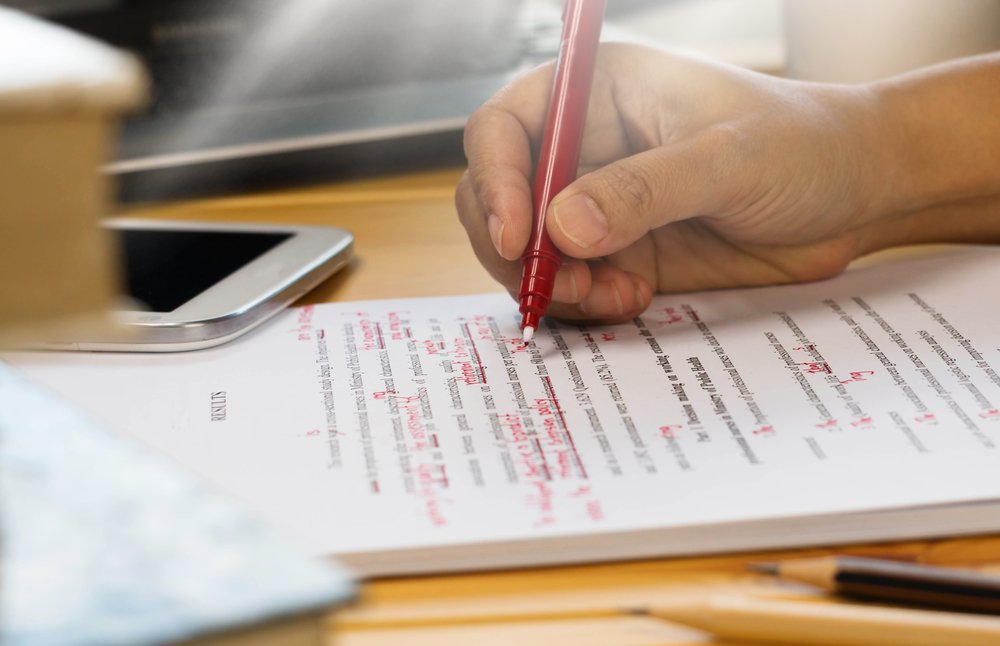As you finish typing those last few words of your manuscript, it’s tempting to breathe a sigh of relief, shut down the computer, call it a day, and plan to submit the article to the journal the next day. It’s fine to take a few minutes (or even a few hours) to pat yourself on the back and congratulate yourself on finishing the draft of your manuscript, but you’re not quite ready to take that final step. First, you want to edit the manuscript.
Why self-edit?
Self-editing helps you identify gaps and errors that you might have missed, but won’t be missed by the expert eyes of the peer reviewers and journal editors. Just as you take care to put your best foot forward during a job interview or the first time you meet someone you admire, you want to take care to ensure these experts’ first encounter with your work is a positive one.
Like a fine wine, it’s best to let the manuscript “breathe” a bit before you start editing, so you can look at it with a fresh perspective. For example, read this out loud:
I love
Paris in the
the springtime.
Now look at it more closely. Notice that “the” appears twice in the sentence. Unless you’re familiar with the trick, you probably ignored the extra “the” because of something called “top-down processing.” You know the phrase, so you say what you’re familiar with even though it’s not what’s actually there. My point is that it’s easy to overlook errors because you see what you expect to see. It’s an object lesson in the need to slow down and carefully review what you’ve written. One way to do that is to use a checklist of questions.
How to self-edit
Ask yourself these key yes/no questions*:
- Does the article meet the intended purpose? After reading the article, refer to the beginning where you explained the purpose to see whether you followed through with what you said you were going to do.
- Is there a take-home message for the reader? What do you want the reader to think, do, or feel after reading the article?
- Is the organization of the article logical?
- Does the opening make the reader want to read more?
- Is the tone appropriate for the readership? An article for American Nurse Journal will be different in tone from an academic journal.
- Are citations and references used where appropriate but not overused? You don’t need to provide a reference for generally known knowledge. Refer to past articles in the journal to get a sense appropriate referencing.
- Is the voice consistent? For example, check for switching back and forth from first person (I, me, my), second person (you), and third person (nurses, physicians).
- Are transitions used to move from one point to another and from one paragraph to another? You want to guide the reader from point to point.
- Are grammar, punctuation, and spelling correct? Remember to run a final spelling and grammar check, but also read through carefully because the check is not infallible.
- Have you used active voice when possible and appropriate? For instance, “The nurse should check vital signs every 4 hours” instead of “Vital signs should be checked by the nurse every 4 hours.”
- Will the article hold the reader’s interest?
This last is probably the hardest to self-evaluate. Consider having a trusted colleague review and provide feedback. If the colleague isn’t a member of your target audience, have a target audience reader member review as well. For example, if your article is intended to target nurses who will be caring for patients with cystic fibrosis in a primary care setting, have a cystic fibrosis expert and a nurse who works in primary care but is not an expert review the article.
Don’t forget to proofread
After making revisions based on your answers to the self-editing checklist, be sure to proofread the manuscript. Here are questions to ask*:
- Are titles and subheads spelled correctly?
- Are all organization names spelled correctly?
- Are all names of people spelled correctly? Is your biography correct?
- Is the sequence of tables, figures, and other graphics correct?
- Is each graphic referenced in the text (per author guidelines)?
- Are captions accurate and any people identified correctly?
- Are photo credits included where needed?
- Are tables aligned properly?
- Is the math correct in all calculations?
- If a source is cited within the text, is the complete reference to the work also provided in the reference or bibliography list at the end of the article?
Completing a final proofread will ensure that silly errors, such as a pie chart not adding up to 100% without any explanation why, are corrected.
Hit the button
Once you edit and proofread your manuscript, you’re ready to hit the email send button or submission site upload button. Once that’s done, you’re ready to take a break and enjoy the satisfaction that you completed your writing project.
*From Anatomy of Writing for Publication for Nurses, 3rd ed. Copyright 2017.


















